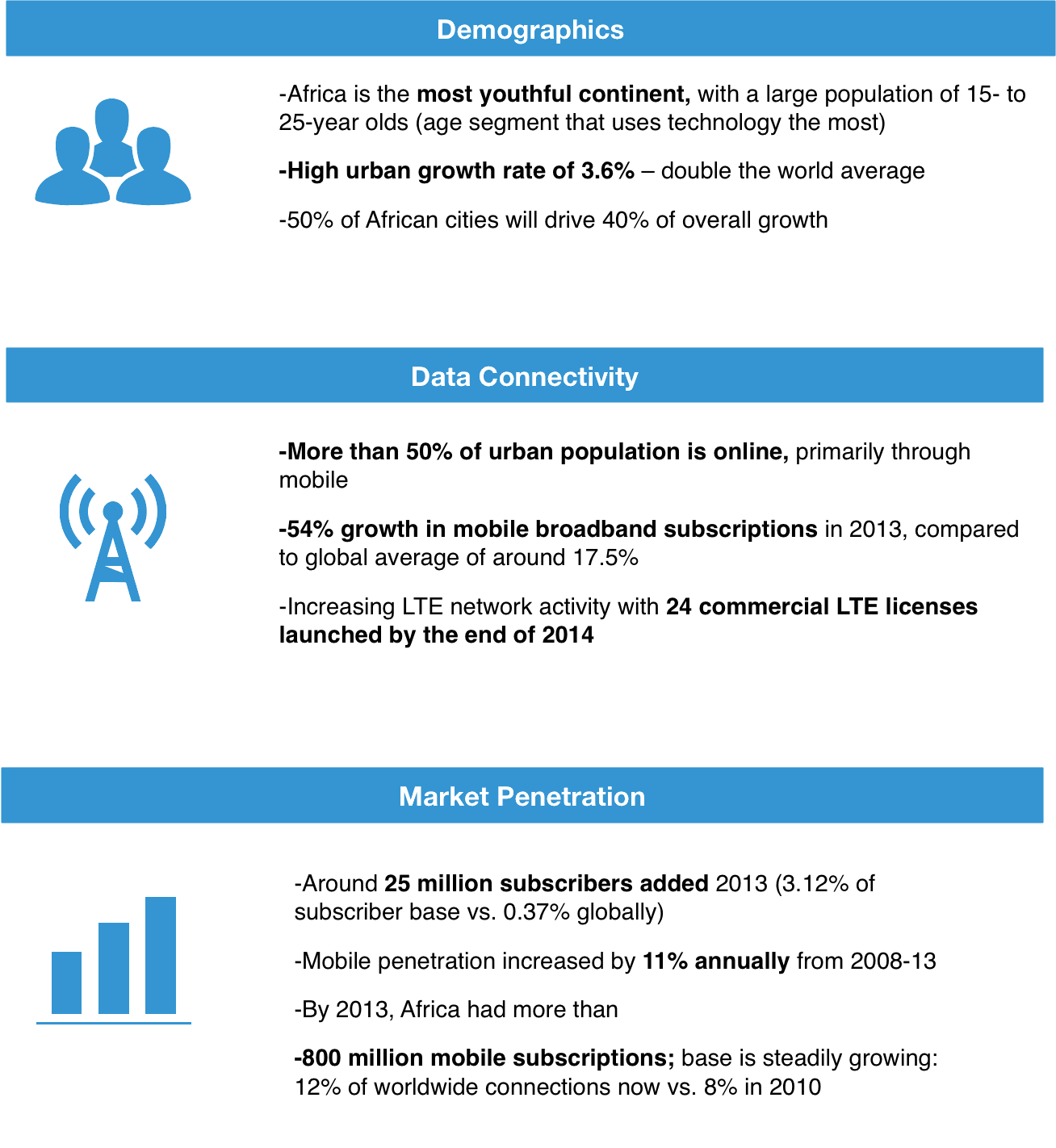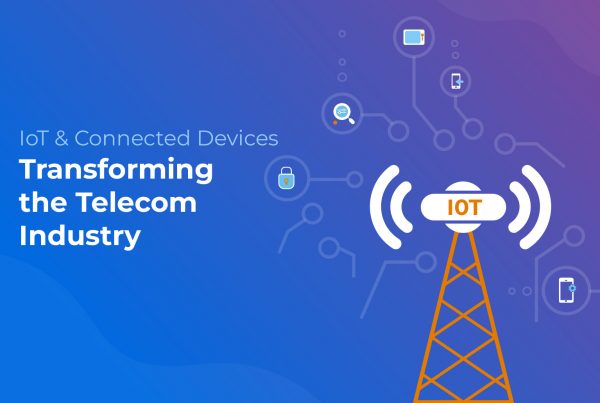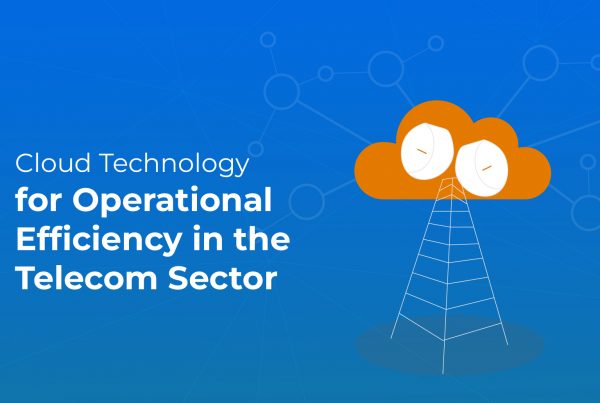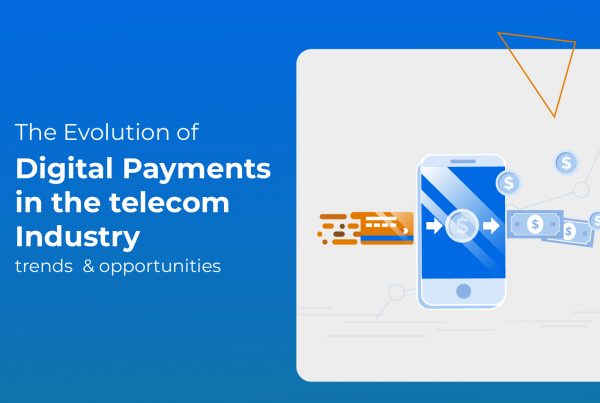Over the years, change in the target market dynamics and increased usage of mobile phones has innovated the way service providers initially functioned. Fuelled by improved economic conditions, the last 5 years have seen South Africa experience the fastest telecoms growth world-wide which has transformed fundamental aspects of social and business life. As discussed in the previous blog: Is Africa Ready For Digital Transformation?, connectivity and digitization form the core basis of growth in the industry; the digital transformation of South Africa can also be considered a result of this blend.
South African telecommunications market is being shaped by trends in demographics, data connectivity, and device penetration.
Digitization has led to aggressive service diversification, an increased market consolidation in South Africa’s telecommunications operators. Driven by the need to explore new revenue streams, and to adapt to changing market dynamics, south African operators are embracing digital transformation to a large extent. The following steps are being undertaken to commoditize digital avenues:
- Internal organizational changes are being considered by telecommunications operators for effective execution of digital strategies
- Market Consolidation is rampant to develop the capabilities required to position themselves as end-to-end ICT and digital solutions providers
- Significant investments are being made in areas such as SDN/NFV, IoT/M2M, fibre, e-commerce and big data analytics so as to accelerate their digital transformation journeys while further enabling them to enhance the agility needed to offer dynamic, innovative, and diversified services in the future
Improvements in data connectivity in South Africa has led Telco’s to expand in IT services and this recognition has acted as a catalyst for country-wide financial stability. With increased income levels of users came the need to save time while spending money. The fusion of data connectivity with digitization fulfilled the gap by introducing mobile money as a channel for digital payments. Mobile money is a form of electronic money that allows users to conduct financial transactions using their mobile phones. It allows financial services to be extended to unbanked people at a significantly lower cost because physical infrastructure is not needed. The rising e-commerce and digital payments segment have added to South Africa’s economic growth and will allow the sector to remain at the forefront of digital innovation.
Mobile Financial Services (mobile money) are at a high priority for many mobile operators, financial institutions, technology firms and governments.
Several major payment categories of mobile payments include: person-to-person (P2P) payments, government-to-public payments, bill and formal-obligation payments, wages and payments for goods and services. Without doubt, the benefits of digital payments outweigh cash and hence it has become a widely accepted phenomenon by consumers in most of South Africa. Mobile money in South Africa comes in different forms. It includes the M-Pesa- which allows account holders to transfer legal tender electronically to fellow account holder by entering simple commands on a mobile phone. Pre-paid minutes can be swapped for cash or spent in shops. Airtime is commonly used as MONEY. The use of airtime as currency is fuelled by the growing ease of sending minutes abroad. A Dublin firm called ezetop, for example, sells airtime for 238 telecoms firms via the web, text messaging and about 450,000 shops in 20 countries.
These services have fostered the ecosystem for mobile money providers, telecom operators and third-party organizations who are constantly on the leap to to facilitate transactions to different industry verticals. Take an example of utilities. Mobile money users in the region can not only receive their salaries onto a mobile money account, but also pay their utility bills digitally, through their mobile phones. This provides a more convenient and secure platform for businesses and their customers to exchange payments. Successful mobile money platforms are in fact prompting the traditional banking sector in South Africa to up its game.
Several major payment categories of mobile payments include: person-to-person (P2P) payments, government-to-public payments, bill and formal-obligation payments, wages and payments for goods and services. Without doubt, the benefits of digital payments outweigh cash and hence it has become a widely accepted phenomenon by consumers in most of South Africa. Mobile money in South Africa comes in different forms. It includes the M-Pesa- which allows account holders to transfer legal tender electronically to fellow account holder by entering simple commands on a mobile phone. Pre-paid minutes can be swapped for cash or spent in shops. Airtime is commonly used as MONEY. The use of airtime as currency is fuelled by the growing ease of sending minutes abroad. A Dublin firm called ezetop, for example, sells airtime for 238 telecoms firms via the web, text messaging and about 450,000 shops in 20 countries.
These services have fostered the ecosystem for mobile money providers, telecom operators and third-party organizations who are constantly on the leap to to facilitate transactions to different industry verticals. Take an example of utilities. Mobile money users in the region can not only receive their salaries onto a mobile money account, but also pay their utility bills digitally, through their mobile phones. This provides a more convenient and secure platform for businesses and their customers to exchange payments. Successful mobile money platforms are in fact prompting the traditional banking sector in South Africa to up its game.
Advantages of mobile money
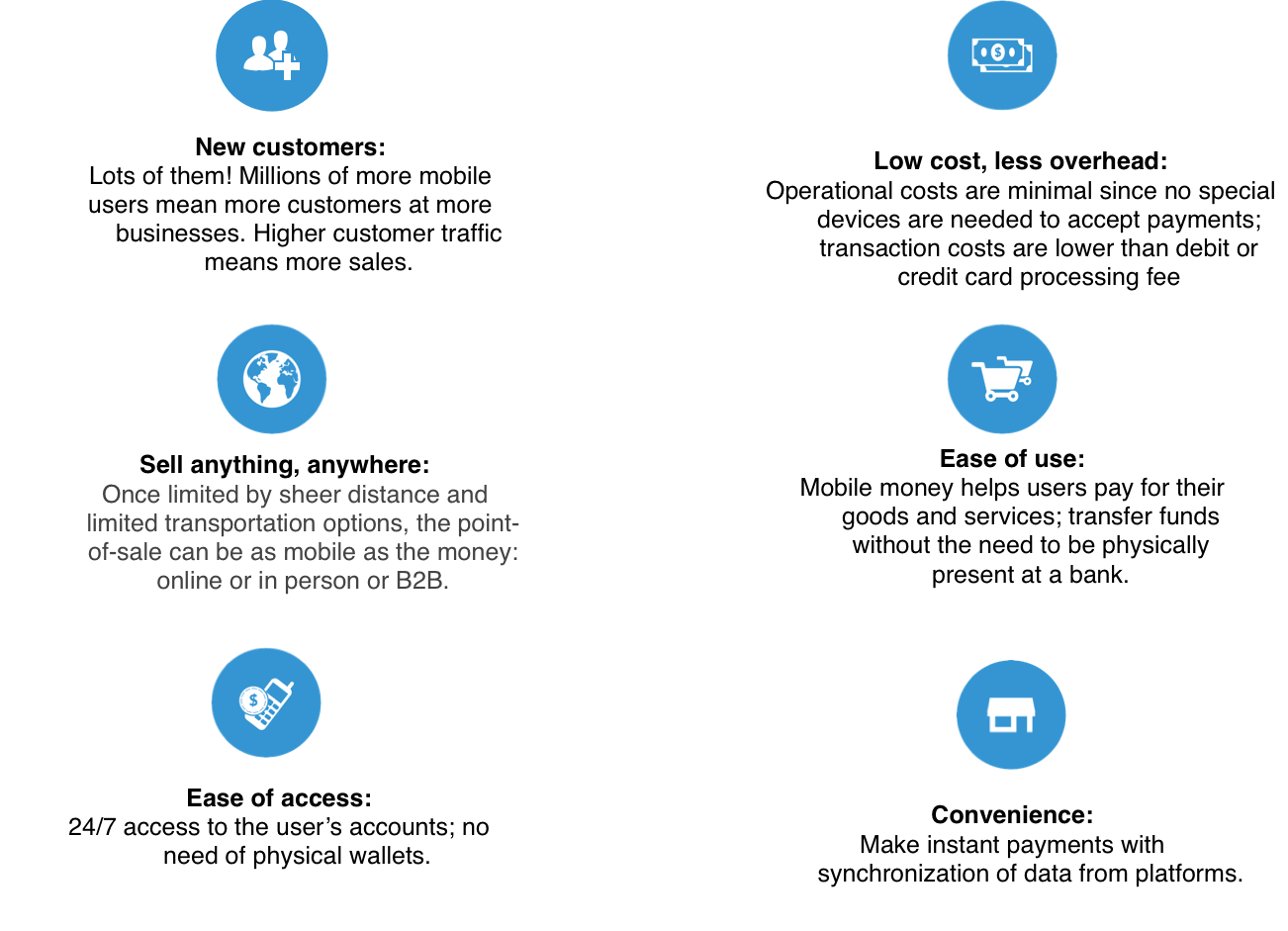
Advantages of mobile money
Mobile payment- Challenges
The convenience and prevalence of mobile payments is not without challenges.
Mobile operators are locked in battle at two forefronts simultaneously:
- With the banks and financial institutions for customers and survival,
- With each other to attract new users and build a customer base.
The continued growth of mobile payments will depend on the interchangeability, safety, and functionality of payment processing platforms, as well as the users’ low cost access to them.
Moreover, to maintain the standard of the mobile financial services, network fluctuations, the effect of loss of mobile phone, unauthorized use and the risk of incorrect transfers are concerns that need to be addressed head-on by the service providers in ensuring efficient and effective use of the services in the long-term.
Mobile money presents a shining opportunity to start a second wave of mobile-led development across the world. There could soon be a next wave of more mature mobile banking services:
- There is now a need to grow a wider range of mobile banking and insurance services on mobile phones, beyond simple payments. To achieve this, different models may need to be put in place
- Banking could take a new shape with mobile-only banks such as TYME in South Africa (MTN, SABA, retailers Pic’n’Pay and Boxer)
- Micro-finance products could be further enabled by mobile, e.g. in Nigeria (cloud based micro-banking software from MTN)
- M-Insurance (e.g. MTN group agreement with Hollard)
